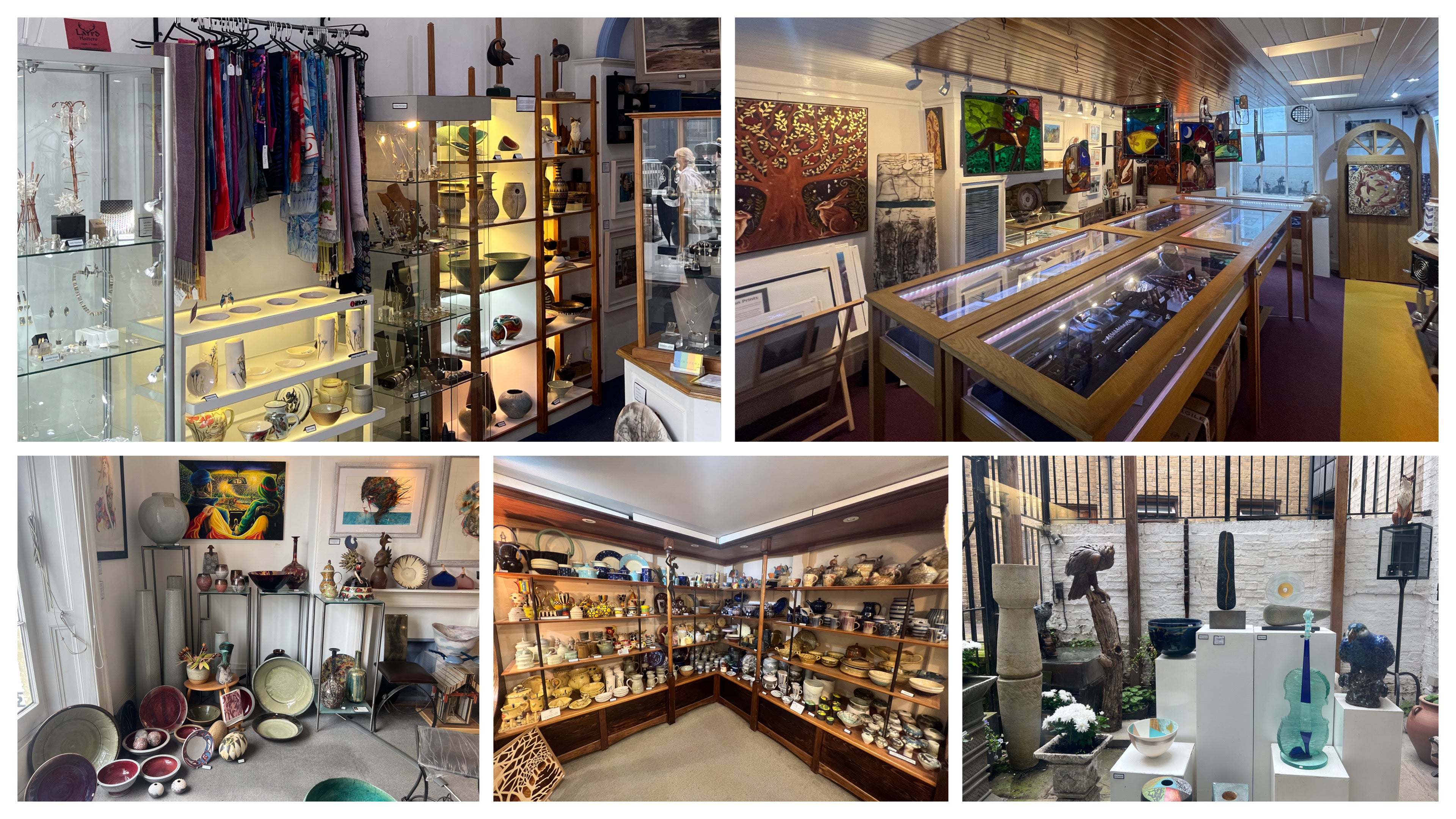
John Wheeldon
John was born in the Derbyshire Dales, the area where he still lives and has deep roots in that area; his family has lived here for generations. John has always been aware therefore, of the early industrial past that surrounds him, it being the birthplace of the Industrial Revolution.
John Wheeldon feels that above all he is a potter who responds primarily to materials and processes, the exploration of which, pushes his work forward. His involvement with raku developed because of a need to escape from limitations placed upon him by lustre techniques he previously used, coupled with a desire to use real fire and become more involved with the processes of firing. The transition was made easier as he saw raku as a form of matt, coloured lustre, not a complete break to his earlier work but a compliment to it.
An interest in ceramic history also informs John’s work although it may not be immediately apparent, as the influence is often subliminal. The forms of much of his work refer to pieces from prehistory, especially the Bronze Age, and have developed from an ancient pot seen in a museum many years ago. John also have a collection of shards found in gardens and fields which span a period from Roman to the 19th century and the marks left by the potters are so eloquent - we leave the same marks on our own work today - it is like a language left by potters to be read by potters.
For several years now, he has been developing an interest in the history and qualities of early18th C. ceramics the time of the Lunar Men, The Enlightenment and the very beginnings of Industrial Ceramics.
John often feels however that modern potters have ignored 18th century English ceramics as a source of inspiration, possibly because of it’s links to the worst excesses of the industrial revolution.
During this period however, pioneers such as Josiah Wedgewood, Thomas Whieldon and William Greatbach took what was basically a cottage industry and transformed it into a hugely successful worldwide concern. The pots were still made substantially by hand but with a new sophistication born of newly discovered white clays and research into glaze and body technology.
So in 2013 after many years of making decorative Raku, John decided it was time to look afresh at what he was making and try to incorporate into it some of the elements of the ceramics of this period. Spending many hours in museums and studying specialist journals, John began to absorb the forms and details of the pots of this period.
Putting this research to use in his own work has meant manufacturing specialist tools such as roulettes and handle dies, which he I has designed and made based on originals in museum collections.
Referencing the forms and techniques of eighteenth century Creamware and using fresh, modern colours, his present work is a contemporary take on traditional 18th C tableware.
Primavera displays around 50 pieces of work by John.
To purchase work by John Wheeldon, visit the Our Shop pages.
